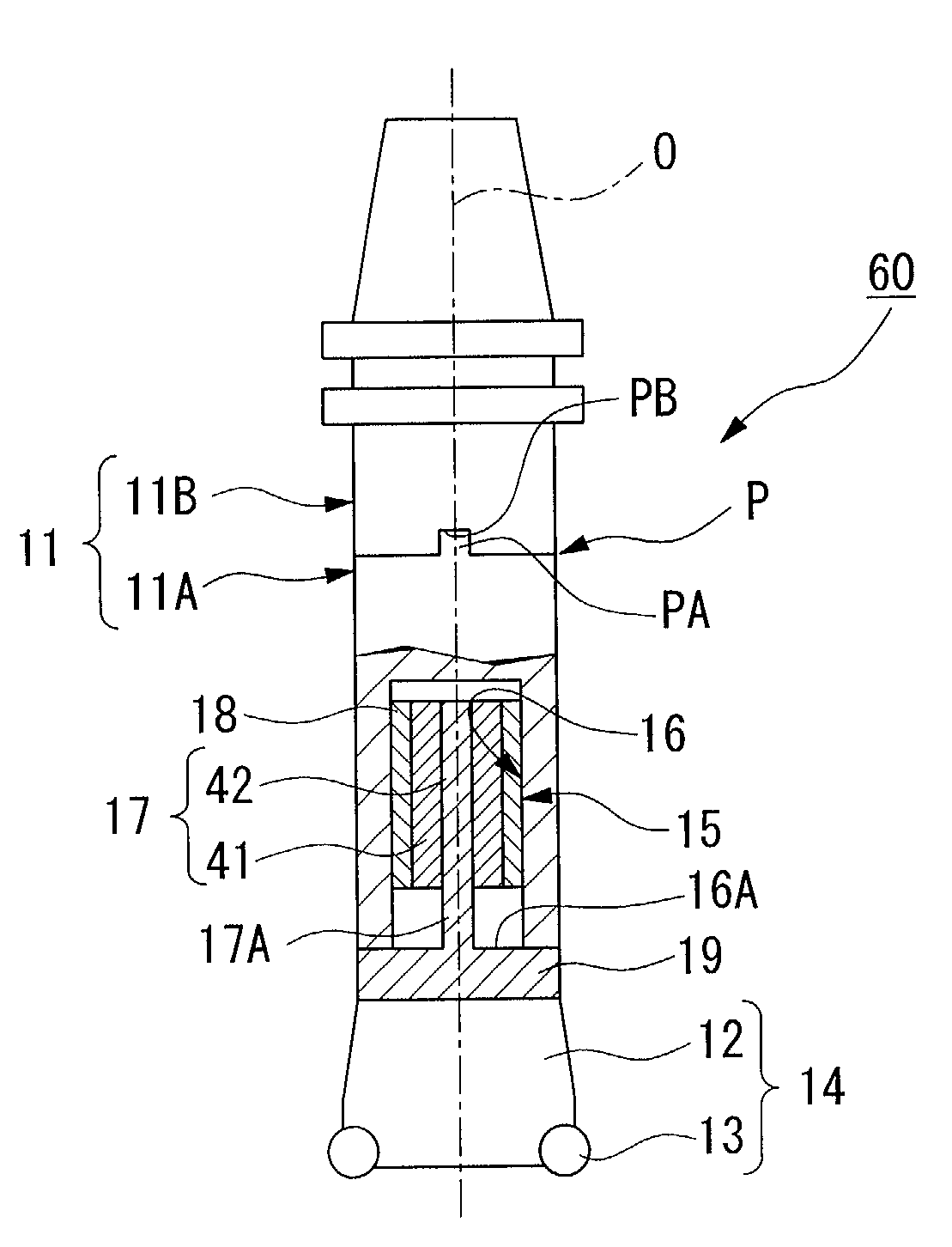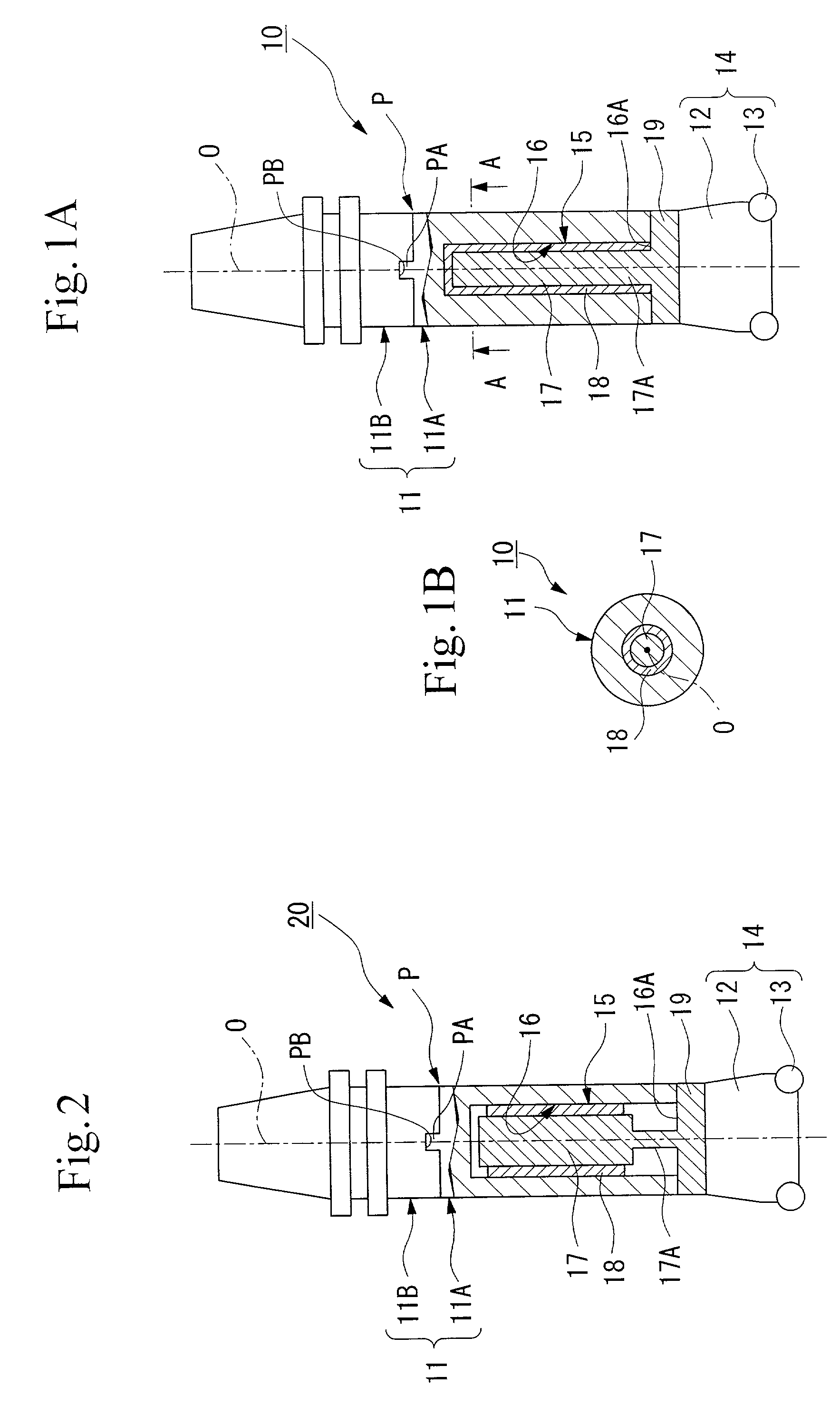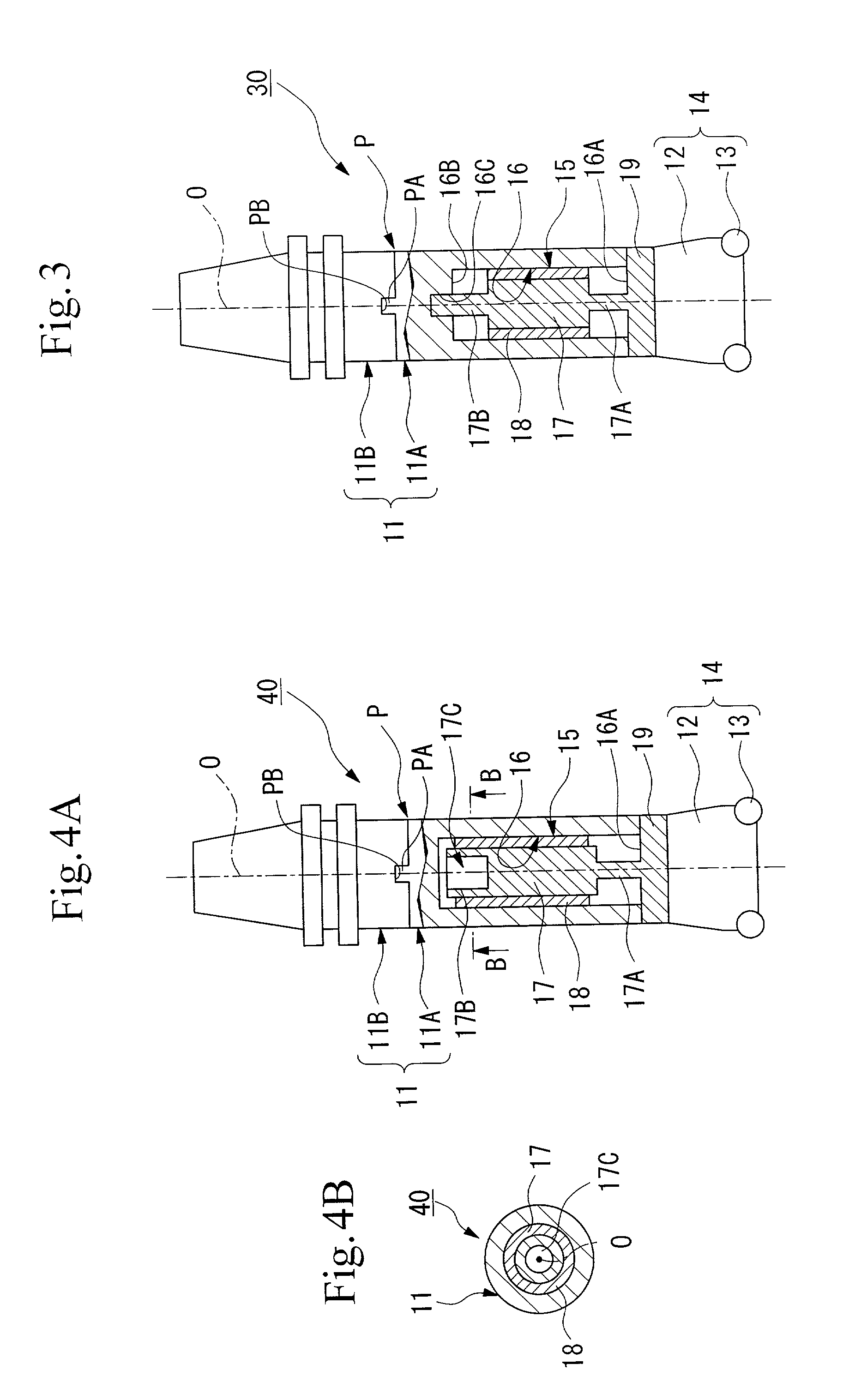Vibration damping tool
a vibration damping and tool body technology, applied in the direction of shock absorbers, machine supports, manufacturing tools, etc., can solve the problems of deteriorating the surface roughness of the processed surface of the material, breaking the tool body itself, and difficult to generate resonance, so as to achieve the effect of suppressing chatter vibration
- Summary
- Abstract
- Description
- Claims
- Application Information
AI Technical Summary
Benefits of technology
Problems solved by technology
Method used
Image
Examples
first embodiment
[0049]As is shown in FIG. 1, the vibration damping tool (referred to below as a damping tool) 10 is a rotation cutting tool that is formed mainly by a tool body 11 and a head portion 14 (i.e., a processing means). The tool body 11 is made from steel, for example, and has a base end supported in a cantilever fashion by a gripping portion of a machine tool. The tool body 11 has a substantially cylindrical configuration and is rotated around an axis O. The head portion 14 has a plurality of inserts 13 mounted on the outer periphery of a distal end of a head body 12.
[0050]As is shown in FIG. 1, the head portion 14 is removably mounted by a connecting screw (not shown) on the distal end portion of the tool body 11 coaxially with the axis O. The head portion 14 is mounted such that a cutting edge of each insert 13 protrudes on the distal end side and also on the outer peripheral side of the damping tool 10.
[0051]A substantially cylindrically shaped hollow portion 15 is formed inside the ...
second embodiment
[0080]As is shown in FIG. 2, in the damping tool 20 the end 17A of the weight member 17 presents a shaft portion having a narrow diameter that is coaxial with the axis O of the tool body 11. The weight member 17 is connected to the inner wall surface 16A of the distal end side of the hollow portion 15 by this end 17A presenting the narrow diameter shaft portion. In this damping tool 20, the visco-elastic body 18 fills a gap between an outer peripheral surface that is shaped as a circular cylinder of the weight member 17 other than the end 17A and the inner wall surface 16 of the hollow portion 15, however, it is also possible to decrease the amount thereof used to fill this gap or to fill the rest of the gap depending on the design of the dynamic vibration absorber.
[0081]According to the damping tool 20 having the above described structure, flexure is easily generated in the small diameter shaft portion (i.e., the end 17A) of the weight member 17 so that vibration is easily excited...
third embodiment
[0083]As is shown in FIG. 3, in the damping tool 30 the end 17A of the weight member 17 presents a shaft portion having a narrow diameter and is also fixed to the inner wall surface 16A on the distal end side of the hollow portion 15. In addition, the other end 17B on the opposite side from the end 17A also presents a shaft portion having a narrow diameter and is also fixed to the inner wall surface 16B on the base end side of the hollow portion 15. Here, when the weight member 17 and the visco-elastic body 18 are inserted in the hollow portion 15 together with the base plate 19, the end 17B of the weight member 17 is fitted together with a support hole 16C provided in the inner wall surface 16B on the base end side by being inserted into this hole.
[0084]According to the damping tool 30 having the above described structure, both ends 17A and 17B of the weight member 17 are formed having narrow diameter shaft portions and the weight member 17 is fixed integrally to the tool body 11 ...
PUM
| Property | Measurement | Unit |
|---|---|---|
| elongation | aaaaa | aaaaa |
| tensile strength | aaaaa | aaaaa |
| Young's modulus | aaaaa | aaaaa |
Abstract
Description
Claims
Application Information
 Login to View More
Login to View More - R&D
- Intellectual Property
- Life Sciences
- Materials
- Tech Scout
- Unparalleled Data Quality
- Higher Quality Content
- 60% Fewer Hallucinations
Browse by: Latest US Patents, China's latest patents, Technical Efficacy Thesaurus, Application Domain, Technology Topic, Popular Technical Reports.
© 2025 PatSnap. All rights reserved.Legal|Privacy policy|Modern Slavery Act Transparency Statement|Sitemap|About US| Contact US: help@patsnap.com



